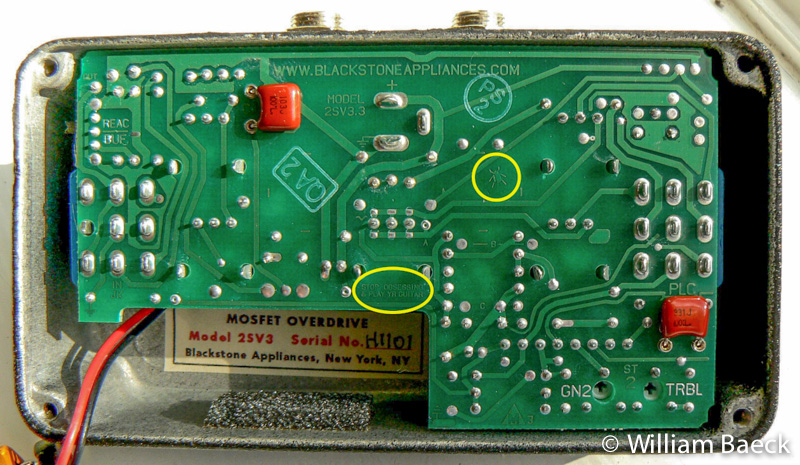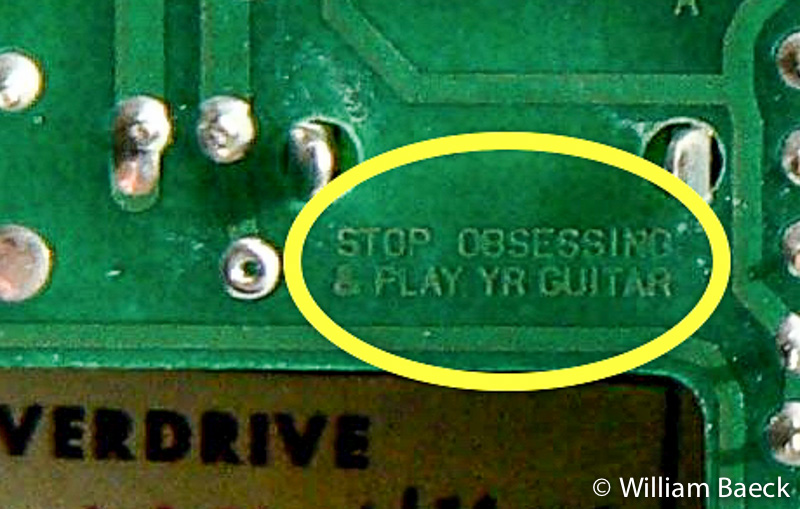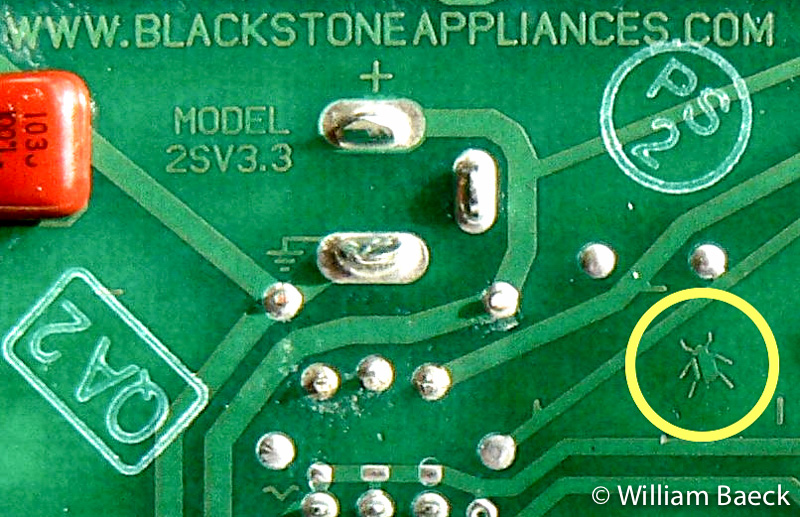The GAS Man: Design for Delight

The other week, I wrote about focusing on being joyful as a guitarist.
Now, normally I wouldn’t think my happiness would stretch to replacing the battery in an effect pedal. But I’ve found that if we’re open to it, we guitarists can find something to smile about in the strangest places.
Case in point: Like most guitarists, I regularly have to test and replace the batteries in my effect pedals. This is a tedious process, only mitigated by the fact that time spent changing batteries is time not spent changing strings.
So there I was, working alphabetically through my pedals, eventually making my way to “O” for “overdrive.” I resignedly popped the back plate off my Blackstone Appliances MOSFET Overdrive pedal, giving it my usual quick glance at the exposed circuit board—just long enough to think how much it resembles the London tube map and makes about as much sense.
But then I noticed something odd: a bug in the circuit. Not a bug as in a cold solder joint or parasitic oscillation. Nope, there near the top right corner was a six-legged beetle etched into the tracings. How cool was this? It was literally an inside joke that I could have gone a lifetime without spotting.
I started looking over the rest of the circuit board, obsessively searching for other graffiti from the builder. But he had already anticipated me. Above the battery compartment he’d written the following in Lilliputian type:
“STOP OBSESSING & PLAY YR GUITAR.”
All the latest guitar news, interviews, lessons, reviews, deals and more, direct to your inbox!
That told me. It was not only funny as hell, it was a very good piece of advice.
In design circles, this is called “designing for delight.” It’s the act of adding a playful detail for users to discover by accident. It’s what software engineers sometimes refer to as “Easter Eggs.”
This is not a new idea, even in guitardom. It may be apocryphal, but the rumor is that back in the 1950s workers at the Fender factory sometimes left penciled messages inside the cavities of guitars. That is, until a player discovered a particularly rude message, reported it to Fender headquarters, and that was the end of that. Now the only individualized message on your guitar is likely to be the serial number.
Bringing this back to us as musicians, even if you’re not a builder, you can still hide playful messages in your playing. Slip in a bit of a riff that other guitarists—or, better yet, non-guitarists—will enjoy. Perhaps a passage from a movie or TV show your audience knows. I remember once hearing a jazz guitarist throw in Woody the Woodpecker’s five-note laugh in the middle of a legato run. Not knowing the source, every jazzbo in the audience nodded sagely at the riffage. But not me and not the guitarist. We were looking at each other and sharing the joke, cracking up at the un-seriousness of it all.
So next time you play for your audience, why not take a hint from the folks who build your equipment, and design for delight?
William Baeck is a writer, photographer and hack guitarist living in London. You can check out his webpage at williambaeck.com and reach him on Facebook and Twitter.



